Queen Bee Facts – The Fascinating and Deadly Truth About Queen Bees
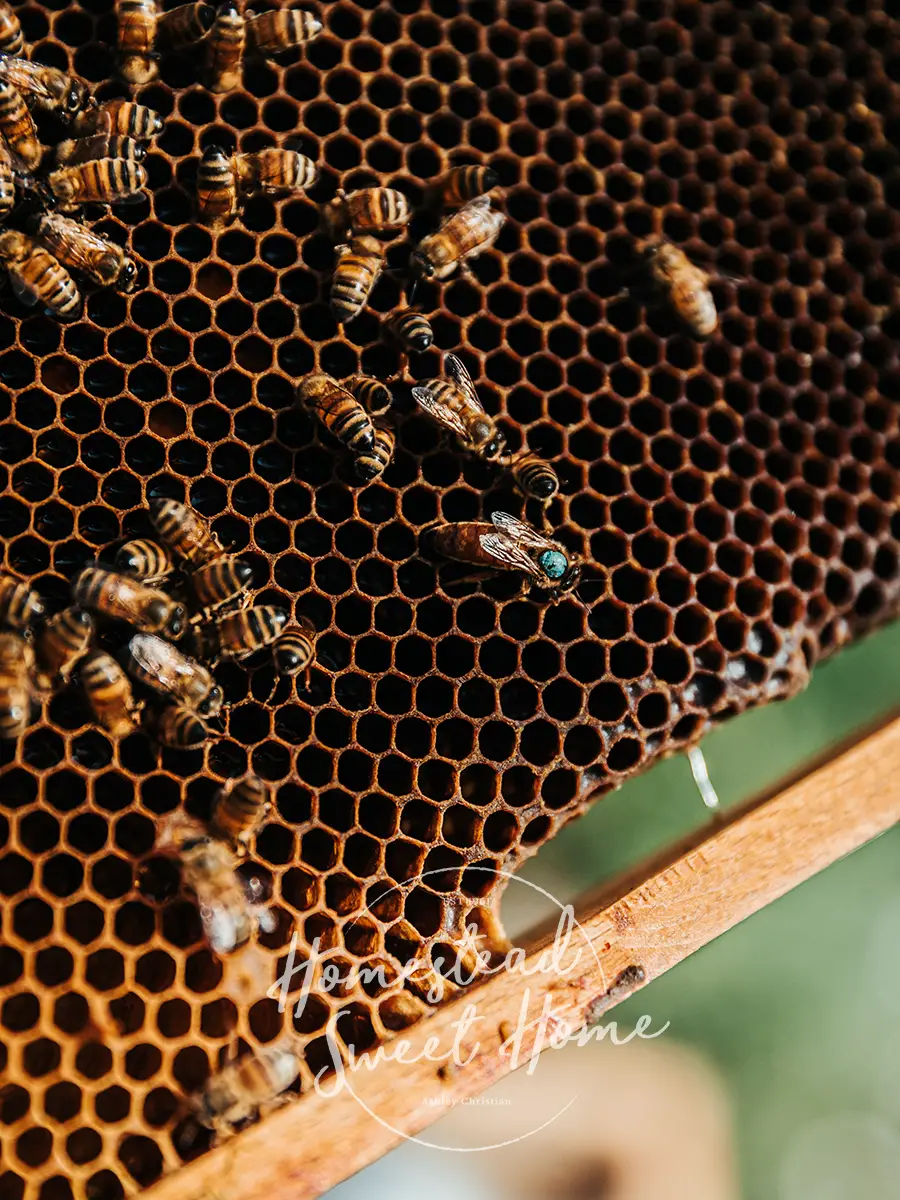
Queen Bee Facts
- She has a lifespan of 2 to 5 years
- Any fertilized egg can become a queen
- A queen bee is created when she is fed a diet high in royal jelly which causes her ovaries to develop
- Queens can lay up to 2,000 eggs per day
- When queen bees mate, the male drone bees die afterward
- A hive cannot survive without their queen bee
- The queen bee is the largest bee in the colony
- There is only one queen bee in each colony
- The queen has to kill other queens in order to survive
- The queen is not in charge of the colony, the worker bees are
- The queen is fed and cared for by the worker bees
- Most queen bees only leave the hive once to mate in the first few weeks of life
- The queen bee can sting repeatedly without dying
The queen bee is a special part of the hive because she is the only bee that can lay fertilized eggs. And there can only be one queen bee at a time, so when new queens develop, they must kill the other developing queens and the current queen. The queen also emits special pheromones that help calm the hive and let them know she is healthy and laying eggs. Without the queen, the colony wouldn’t survive!
How Does a Bee Become Queen?
Nurse bees will select 10 to 20 larvae and construct larger queen cells to give the future queen candidates plenty of room to grow. Then these queen larvae are fed a diet high in royal jelly, which is a milk-white substance secreted from glands on the head of nurse bees. The royal jelly triggers the hormonal development of the queen bee so she can reproduce and lay eggs.
All bee larvae are fed royal jelly for the first three days of development, but only future queen bees are continuously fed the high protein food in copious amounts. The males will become drones, the sterile females will become workers, and the fertile female will become the queen.
Once the first queen bee of the batch begins to chew her way out of her cell, the workers will come and help her chew out more quickly. She will then make a special chirping sound to locate the other developing queen bees. They will chirp back, and then she will find their cell and sting right through it until all the other queens are dead. If two queens emerge at the same time, they will fight to the death.
Will a Queen Bee Sting You?
While it is technically possible to be stung by a queen be, it is highly unlikely. Because queens are very docile to humans and they often only leave the hive once in their lifetime. In the remote chance of being stung by a queen bee, it is said they don’t hurt as much as worker bee stings because her stinger is not barbed like the worker bee is. Queen bees do use their stinger on other queen bees to kill them and take over. There can only be one queen bee and she won’t hesitate to sting any challengers. The queen bee is unique in that she can use her stinger multiple times without dying.
After hatching and establishing her position by killing any other newly hatched queen bees, she will leave the hive once to mate. Then she returns to the hive and stays there and lays eggs as she is fed and groomed by worker bees. Unless the hive becomes overcrowded and she swarms and leaves with half of the bees in search of a new hive, she will never leave the hive again.
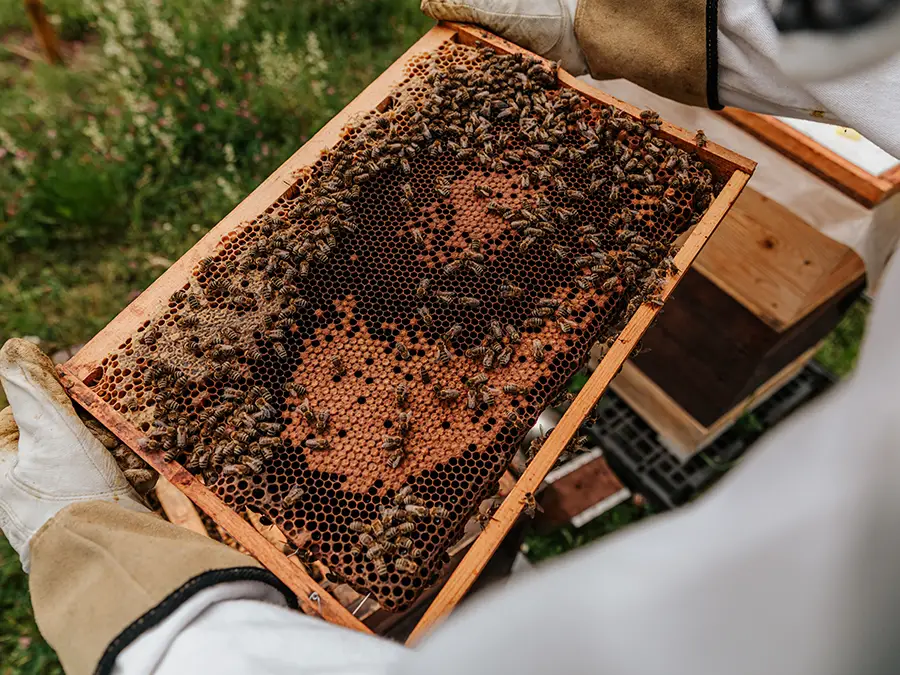
What Happens if the Queen Bee is Killed?
A hive cannot function without a queen bee, so if she is killed, the nurse bees will immediately identify several larvae with queen bee potential and begin grooming them for queendom by feeding them a diet exclusively of royal jelly, which activates their hormones and reproductive abilities. The first to hatch becomes the new queen bee, she will go find the other developing queen bees and sting them to death. If two immerge at the same time, they will fight each other to death, and the winner will be the new queen bee.
Is There a King Bee?
There is no one special king bee, but there are many drones that are male bees. The drone begins as an unfertilized egg, so drones technically have a mother (the queen) but no father. Their sole purpose is to mate with the queen, which they usually don’t survive as their appendage is ripped from their abdomen.
When a new queen takes her mating flight in the first few weeks of life, she will mate with 15 to 20 drone bees for maximum genetic diversity. Genetic diversity keeps the hive healthy and strong. Several hundred, to even thousands of drone bees will hang around a DCA (drone congregation area) for their chance at mating.
The few bees who get the chance to mate die soon after, and the rest hang around the hive until the worker bees decide there are too many of them to feed and kick some of them out where they later starve or freeze to death. Drone bees live an average of 2 months, while worker bees live between 6 weeks to 6 months.
What is the Lifespan of a Queen Bee?
A queen bee lives an average of 2 to 3 years. She produces pheromones that are spread throughout the hive by worker bees, reassuring them that she is healthy and laying eggs. Over time these pheromone levels will naturally begin to decline as her egg-producing ability also lessens. This signals to the worker bees that it’s time to start raising a new queen.
The current queen will continue laying until a new queen establishes herself by killing the other baby queens. Then the new queen will kill the established queen by stinging her and will take her place.
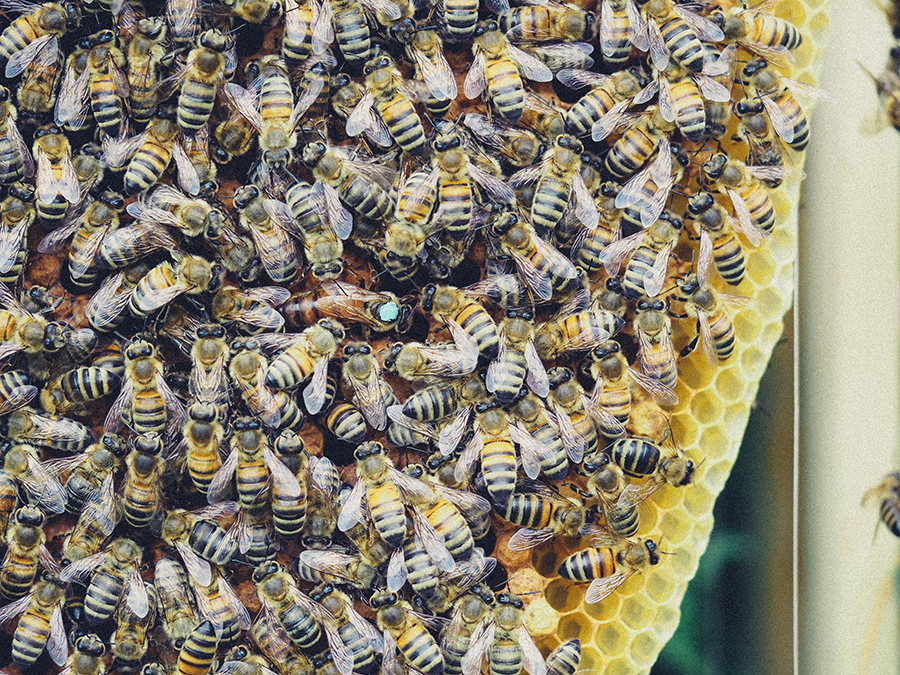
Does a Queen Bee Leave the Hive?
The queen bee will typically only leave the hive once, within the first few weeks of emerging from her larvae cell. This is called the mating flight, where she enters a DCA (drone congregation area) of several hundred to even a few thousand drone bees wait for a chance to mate with her. She will mate with 15 to 20 male drone bees, who will then die. With the sperm from this handful of drones, she can lay eggs for three to five years.
Usually, the queen will only have one mating flight, but if it proves unsuccessful, she can come out again. Though this isn’t very common. The second reason a queen would leave the hive is to swarm. A swarm happens when the worker bees decide the hive has become too crowded and they need more space. They will slowly start feeding the queen less so she is lighter to make the move. Then they will leave in a swarm and find a new hive, where the queen will stay until her production slows down and the worker bees replace her with a younger and more productive queen.
What Happens When Bees Reject the Queen?
The most common reason for bees to reject a new queen is because she is not genetically related to them and therefore smells different. If she is perceived as a threat, the worker bees will create a ball around her and sing her to death. This typically doesn’t happen when worker bees raise up a new queen from their own hive, but rather when a beekeeper introduces an outside queen.
Beekeepers may need to introduce a new queen if the old one dies and there are no fertilized larvae for the worker bees to raise up into a new queen. This would be an infertile hive and a new queen would need to be introduced or it will slowly die. Other beekeepers like to introduce a new queen to the hive each fall to keep up the hive production and add greater genetic diversity which leads to strong and less disease-prone hives.
To reduce the risk of an outside queen being rejected, you can use a small bee cage and let the workers slowly get used to the new queen by smelling her pheromones. In 2 to 5 days, they should be ready to safely introduce without the cage.
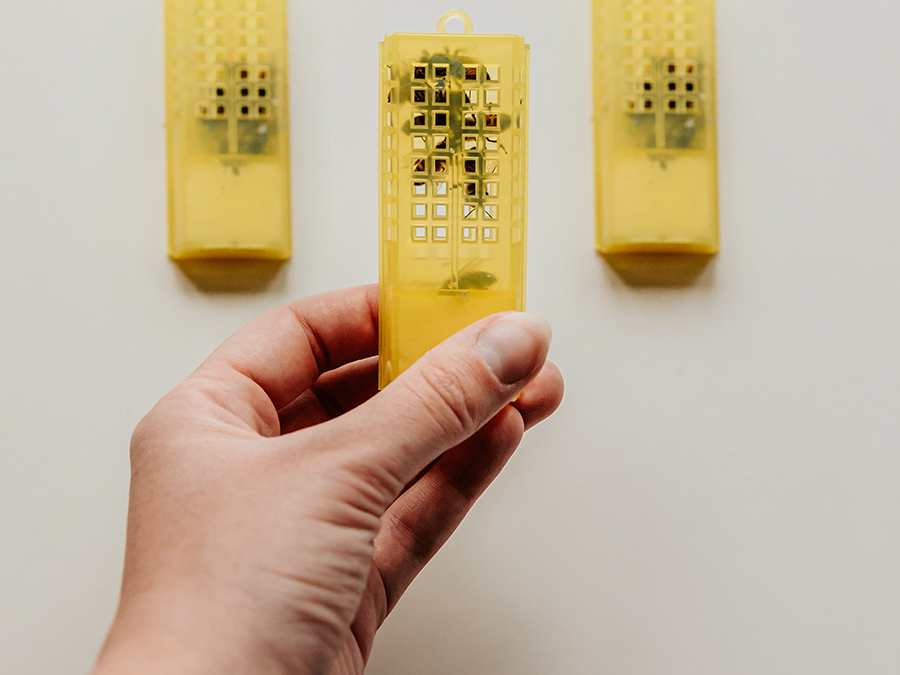
Can the Queen Bee Fly?
Though the queen bee can fly, she typically only does so once, maybe twice in her life. The first flight is called the mating flight and is done in the first few weeks of her life. Most mating occurs within a mile of the virgin queen bee’s home hive. Though if she does not find a drone congregation area close by, she can fly up to several miles to mate.
The second reason she would fly is if the hive becomes overcrowded. The worker bees will put the queen bee on a diet so she can more easily fly, and half of them will swarm with the queen to a new hive.
Can Humans Eat Royal Jelly?
If royal jelly is so good for the queen bee, can humans benefit from it too? The answer is yes! Medically backed claims of royal jelly’s healing abilities include easing symptoms of PMS and Menopause, aiding in wound healing, and can lower blood glucose for those with Type II diabetes. There are many other reported benefits, but the ones listed here are backed by scientific studies.
Royal jelly can be taken orally or applied to the skin. It can be purchased, or beekeepers can harvest it themselves, though it is a very time-consuming process to extract from the cells of 3-day old larvae.
Can a Queen Bee Survive on Her Own?
The queen bee cannot survive on her own. She is attended by a royal court of worker bees who take care of her. Queen bees do not have the same ability to digest their food as the workers do. Worker bees will actually pre-digest the queen’s food for her and feed it to her. They will groom and clean her. They will also carry her waste away. Imagine being a mother and not having to worry about anything!
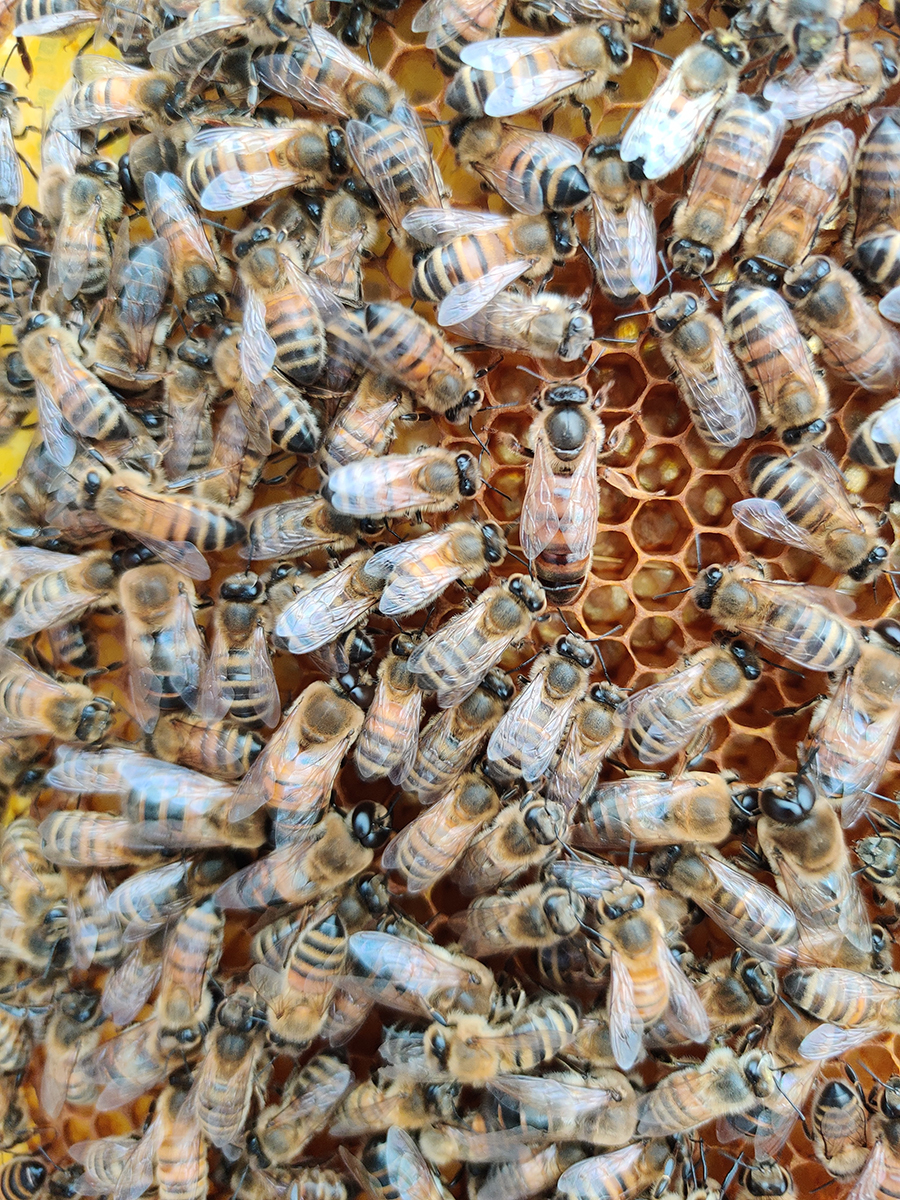
Do Bees Protect the Queen?
Since there is only one queen in each hive and she is an integral part of a thriving colony, the worker bees will protect the queen. If they sense an invader, they will create a swarm around it and sting it to death, sacrificing themselves in the process. They also take care of her every need, feeding and grooming her so she can focus on her job of laying close to 2,000 eggs per day.
How Much Does a Queen Bee Cost?
You can expect to pay between $25 to $100 or more to purchase a queen been online. You’ll want to check out the company you’re buying from and ensure their bees are healthy, productive, and have a good temperament. You can also join your local beekeeping club and trade for useful items and even queen bees. Plus you will gain so much valuable information and connect from knowing your local beekeeping community.
Adding a new queen bee can be helpful to add in different genetics which will help your hive stay healthy and resistant to disease. You will also need to purchase a new queen bee if yours dies before the workers are able to begin the process of hatching a new queen bee. When introducing a new queen, be sure to keep it in a cage for a few days to protect it from being rejected by the colony.
What about you, have you kept bees before? What have you learned about queen bees you can share with us? Tell us about your experience in the comments below.

Leave a Reply